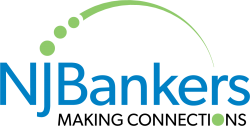Each year, every employer that offers a medical plan wonders what their increase will be in the coming year. The uncertainty produces anxiety to the human resources and finance teams. The hope is that the medical carrier will provide an as-is (no change to the rate) position. Unfortunately, a no change to the rate rarely, if at all, happens on the initial renewal and will occasionally happen in years three and beyond. In this article, we will discuss the anatomy of a medical plan renewal and how to potentially mitigate large increases.
Medical plan offerings are broken down into the under-50 employee market (small group) and 51-plus market (large group). The rules and regulations are slightly different in each size segment. For example, groups in the 50 and under segment will receive their renewal within 45 to 60 days of their renewal date. Groups in the 51-plus segment typically receive their renewal in the 60 to 90 days prior to their renewal. Groups that are in the 500-plus segment will generally receive their renewals 90 to 120 days prior to their renewal date.
What happens when the initial renewal position is received?
The renewal will indicate the percentage of cost increase over the prior year’(s) rate(s). In the 50 and under segment, the renewal will not include detailed claims data; some carriers may provide basic claim information but most do not. In the 51-plus segment, claims data is provided and the quality of the data is dependent on the carrier and the length of time an employer has been on the plan.
What is involved in the rate and renewal rate construction of a medical plan?
• Plan Design: PPO v. HMO, Open Access v. Network only, copays, prescription drug copays, etc.
• Co-Insurance: The amount an employee will pay for their portion of the service provided.
• Deductible: Amount employee must pay before the plan will pay for medical services.
• In Network v. Out of Network Services: In network means that the doctor is contracted therefore, generally, costs are lower. Out of network, doctors are not contracted, so costs can be much higher depending on the circumstance.
• Covered Services: Less expensive plans will provide basic service coverage only while the higher cost plans provide a wider range of covered services.
• Retention: The cost of maintaining and installing the plan; examples would be new plan installation, enrollment, and annual open enrollment.
• Projected and current loss ratio: Current losses are the claims evaluated by the carrier. With projected losses, the carrier analyzes all historical claims and trends for evaluation.
These seven factors are the most common elements of developing the cost of a medical program from a new business and renewal rating perspective.
Once a plan has been in place for a year, the carrier will provide the initial renewal using the plan experience to determine the percentage of increase needed. If the plan has run well (a positive loss ratio), the group may receive a modest or trend increase. Trend increases typically run from 6% to 8.5% (8.5% has been the norm over the past few years). The question always arises as to why any
increase is needed if our plan is running well. The answer, usually, is the medical carriers try and get a level of trend increase to offset future losses and mitigate large increases when the plan does not run well.
How can we negotiate a rate increase to a lower percentage or to a rate pass?
This is where the value of your benefits consultant and your human resources team comes into play.
There are a variety of methods that can be employed to help reduce the cost of a medical plan’s renewal. The list below notes some of the most common avenues a consultant and HR team will discuss to help lower their medical plan increase:
- Review the experience to determine the accuracy.
- Review plan design and make changes that can help lower the plan cost.
- Review deductible and coinsurance percentages.
- Market the plan to other carriers to inject competition.
The goal is to always minimize changes to the plan, so employees are not feeling the pinch of higher costs, but, in order to create a cost-effective program, change is usually needed. The list above is the best starting point as each method will have an impact on the overall cost of the plan. In an attempt to maintain employee satisfaction, marketing the plan can help potentially lower the renewal cost while minimizing or negating plan design changes. Changing your medical plan carrier is not always the best option but can help lower cost and improve access. The bottom line is that medical costs increase each year, and utilizing some of the above strategies can help control the cost of the plan.
In conclusion, this article has briefly described what to expect when reviewing your annual medical plan renewal and a few areas to examine when considering lowering your overall costs. Working with an employee benefits consulting firm can help your team reduce your overall cost, helping you increase productivity through providing affordable benefit plan options that provide great access for employees and assisting your team to develop a benefit plan communication strategy that assists with educating your employees on how to best to use their medical benefits with the lowest out-of-pocket costs. Thank you to all of our members for your continued partnership and support. Please feel free to reach out to the BCG team with any questions.













